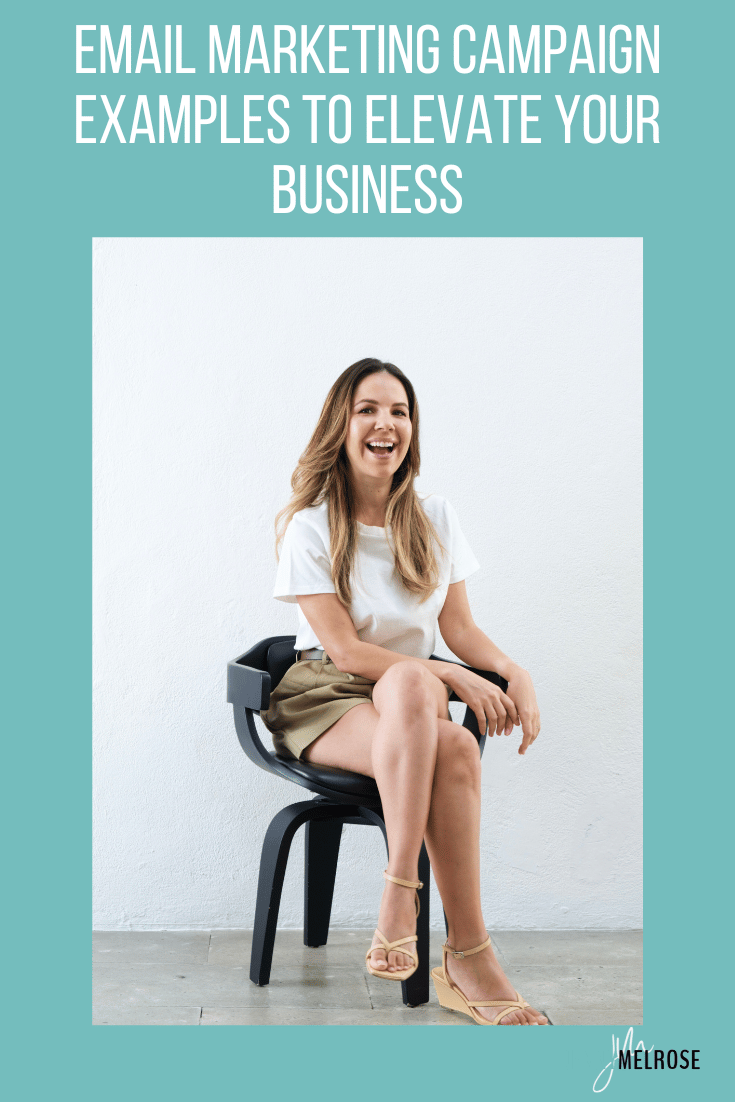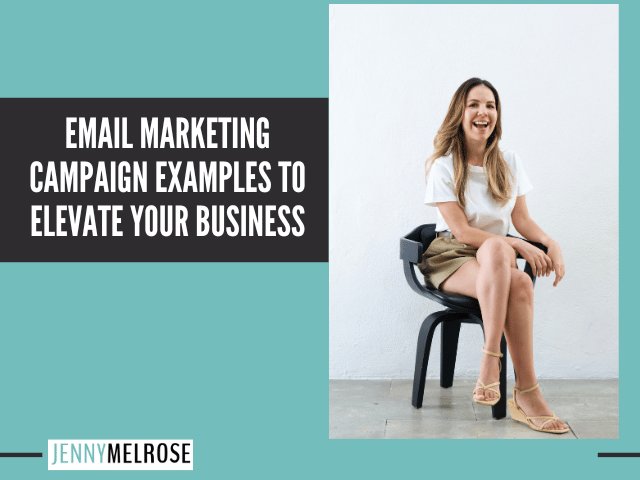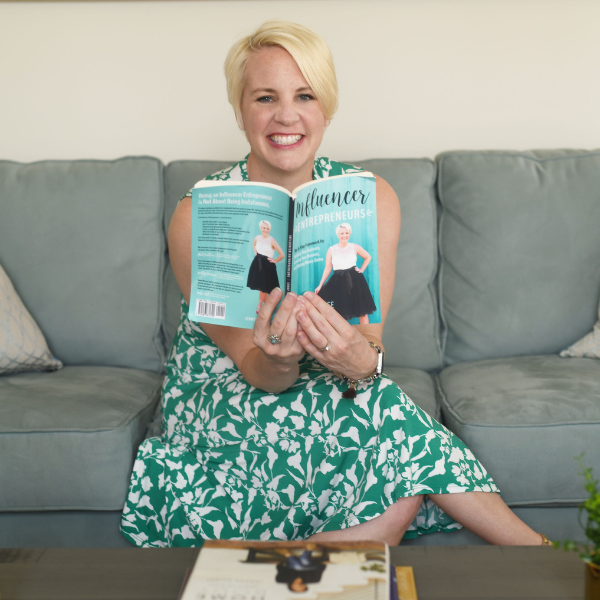Elevate your business with inspiring email marketing campaigns. Discover real-world examples and strategies to boost engagement and ROI.
IE 365: Email Marketing Campaign Examples to Elevate Your Business with Martha Bitar from FloDesk

Martha Bitar is the CEO of Flodesk and is sharing her expertise in email marketing.
What is an email campaign?
An email campaign is either one single email that you send to your audience or a series of emails that serve a specific goal.
For example, you might send an email to new email subscribers. Another example of an email campaign is an email series of four emails for a black Friday sale that shares different offers.
All of the emails will have a specific end goal in mind that you will use to create your email campaign. Your email campaign should always have a goal.
This email’s goal could be to share content, nurture the audience, or promote an offer or sale.
What qualities should an effective email campaign have?
- Simple
- Personalized when possible
- Relevant.
- Using segmentation when possible.
Email campaigns should be simple and have one single goal. It is not effective to have a lot of different goals for one email.
Focus on one single action that you want your audience to take. It should have one clear CTA, or “Call to Action.”
This is also known as “The Button” you want the audience to click on. While you can have several buttons, make sure that all of them are asking for the same thing. An email in your email campaign should be personalized, relevant, and engaging.
The email service you are using should have a personalization field that you can use to include the name of the email subscriber, “Hi Martha!” for example. It is even better if you can go beyond basic personalization.
There is a tool in email marketing called “segmentation” that helps you put your audience into different buckets based on their preferences and interests.
If you have a winery and are planning to send an email about your new red wine, it makes the most sense to send them to my red wine segment.
If you are planning to send it to your white wine lovers, then you change your message to be hyper-relevant and personal to them. “I know you love white wine. If you are feeling adventurous, maybe you want to try something different. Here is what I recommend.”
Marketing is all about marketing to the right person at the right time. This will help you from being marked as spam and having people in your audience unsubscribe.
Simple is important. Often, clients will try to put many different links into an email. People get overwhelmed when they have too many different things and then do not take any action at all. Having one specific action for your email campaign is important.
When you are building an audience, you want to communicate with them in a very human way.
At the same time, we are building a business. We want to make sure we are guiding and holding the hand of our potential audience to get them to take the action we want them to take; to look at your offer, book a call, or whatever you want them to do.
What does your business need your audience to do?
Often, people feel like they are icky salespeople when using calls-to-action buttons that say “Buy It Now” or “Save Your Spot.” In reality, that adds value to your audience because what you are offering is something they are interested in or they wouldn’t be part of your email list.
We live in a digital era with short attention spans. People love it when you make your offer clear, thank them for their time and opening your email, and make it simple for them to get your offer.
We have imposter syndrome and may not be sure if we have a lot to offer but that is psychological. We need to have a clear ask and give them an offer that solves their problem.
If they are not interested in our target audience, they will unsubscribe.
What does a successful email marketing campaign consist of?
- Plan your email campaign.
- Don’t overplan it.
We get stuck in a world of perfection but perfection is the enemy of progress. Take time to plan your email campaign and figure out what your goal is, including your metrics.
That will give you an idea of how you are doing and help you evaluate future campaigns to see which ones are more successful than others.
Learn what works for your business, what you should be doubling down on, or what doesn’t work for you.
Part two of planning a successful email campaign is to decide what it will look like. What is the ideal journey for your customer when it comes to specific objectives?
Going back to the example of the winery, if you wanted to sell your new red wine, you may not want to make an offer right away if you haven’t talked to your audience in a while.
It is best practice to add value to your audience before you make an ask of them. You might send them your “Top Wine Pairing Tips.”
Part 1 of that campaign is to educate the audience. Part 2 would be to nurture the audience by getting them to understand who you are, and why they should be talking to you and/or buying from you.
The second campaign might be telling a story of behind the scenes, about how you are handling harvest season, or a party when you invited friends and family.
The third email in the series would tell them the offer and ask them to buy. There needs to be urgency in the email so people are compelled to buy. Time is of the essence. If you put something on social media, you don’t know exactly when your audience will see it.
If you send an email, you know when they receive it and the timing can be in your favor. Have a set beginning and ending time for your offer. Your offer may involve other tools.
For example, at Flodesk, we have a tool called “checkout” on sales pages. When we send an email, we have a button that takes them directly to a checkout page which explains the entire offer on one page along with the sales cart and all of the fields to answer easily so they can checkout without going to another page. It makes for a cohesive experience for your audience.
Once you have your plan in mind, it is time to execute it. It is normal to have doubts about the execution phase. You will wonder if it could have been more perfect, if you should have hired a designer, if you should have spent more time writing the copy, etc.
You need to just get it done and put it out to the world. This probably won’t be your last email campaign and you will learn to make the next one stronger.
The biggest cause of failure is not getting the offer out to the audience. This looks at the process as a promotional campaign and breaks it down into pieces. It doesn’t have to be a straight promo. It can be nurturing.
A blogger may have a product but not continually run a campaign for it. This helps them consider how they want to continue to engage with them if they only want to sell that product once a quarter.
What are some of the best email marketing campaign examples?
This can be a single email. Some successful bloggers have a “round-up” of their favorite things.
Bloggers can curate the information that they have found that is relevant to their audience. While you may think you are just sending a list of your top favorite products with affiliate links, you save your audience time because they trust you.
Educational emails are always good. Find out what your audience wants to learn by asking them. Send them a quick email and find out what they love, what they dislike, and what they want to see more of.
Make a habit of talking to your audience like that. Add a quick note to your regular emails that says “I would love to know what you think. Feel free to reply directly to me.” This is a great way to increase your sender reputation and deliverability.
Learn the top questions that your audience is asking you as this is an indicator of what they want to see for educational content. One of Rebecca’s favorite tools for email marketing is Workflows because educational content is best when it is broken into a series of emails.
Take one day and write a series of emails and then automate them with a workflow. For example, this series of emails is going to go out every week on Wednesday or once a month.
Decide your cadence and your conditions as well; meaning that if someone subscribes to a segment, they are going to get that specific set of emails. If someone clicks on a specific button, they might get switched to a different segment.
Batching your work and doing an educational series works well because nurture and educational emails don’t have to be time-based.
The key is to batch and automate it. While everyone will receive the content, it will not all be at the same time depending on when they get started. They may sign up via a form on the website or a link in your bio.
After they sign up, they will begin to get your email series that are automated. Anytime anyone signs up, this will happen for your audience. You can make those campaigns connected to the guides you offer.
This could be inspirational too. Inspiring and educating them can both be good.
Flodesk Offer:
All Flodesk forms are FREE! There are no strings attached or hidden fees. You can build a list for free. Flodesk believes your email list is the foundation of a thriving and profitable business.
They want to see people be successful so they are offering forms for free.
When you are ready to start sending emails or selling online, they have a flat rate no matter the size of your list.
You can get 50% off the first year of Flodesk by clicking here.


